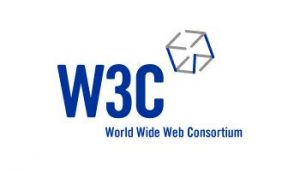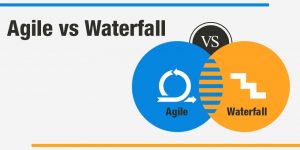For any business, be it at its newborn stage or adolescence stage, a business website is vital to announce their presence to the world and extend their welcoming hands.
The best thing to do for building a website is to go to a web development company instead of just going from freelancer to freelancer for different aspects of the sites.
As human beings, there is a limit to what we learn just by noticing. There is always something that, for one reason or another, we miss. The thing that we missed might just be something that is common knowledge to others, but we are still unaware about that.
I can’t count how many times I went like ‘Wait, what?!’
This phenomenon is applicable to all situations.
There are things that everyone knows when it comes to web development company, but for some reason, you probably don’t, especially those who are at the beginning of the trail for choosing a web development company.
Knowledge is power, and those who know these three things about web development companies have the power to know what is best for them.

The following three things that you are about to find out about web development companies will surely be decisive for choosing them over freelancers.
W3C STANDARD
Here’s something you didn’t know about web development companies, they follow a ‘standard’ for developing websites.
Didn’t know that, did you?
Of course, they do! The World Wide Web Consortium (W3C) is an international industry consortium that is dedicated to providing a guideline for leading web development to its full potential.
W3C compliance or standard basically means that the HTML and CSS code that a website is built with is fully compliant with the standards set by the World Wide Web Consortium.
The W3C developed standards to enhance the interoperability of web related products. These standards create the bases that ensure that the product you will receive is of good quality.
Although sticking to the standard isn’t mandatory, all of the biggest and best web development companies follow them.

So, what are these standards?
•HTML – HyperText Markup Language
Developed by the father of World Wide Web, Tim Berners-Lee, HTML is the publishing language to create web pages for the World Wide Web. HTML codes ensure that the formatting of images and texts is properly done and internet browsers display them as they were intended.
Currently, HTML5 is set as the standard for presenting and structuring of content. It incorporates features such as video playback and drag-and-drop, without relying on third party plugins.
•XML 1.0 – Extensible Markup Language
Similar to HTML, XML is also a markup language where instead of using a fixed set of elements, you use customized elements created either by yourself or someone else.
XML is much more flexible than HTML. Since direct rendering of XML is spotty in browsers, it is set as a standard for machine-to-machine communication.
• XHTML 1.1 – Extensible HyperText Markup Language
It is a reformulation of HTML as an XML application. IT’s basically a stricter version of XML that used HTML 4.0 as its base. XHTML will show up in your browser identically to the equivalent HTML. It’s better to use XHTML if there is any chance of needing to reprocess your content.
XHTML 1.1 became a W3C Recommendation on May 31, 2001. Currently XHTML5 is being developed to adapt with HTML5
•CSS – Cascading Style Sheet
CSS is used for changing the appearance of HTML or XML elements, by assigning styles to them.
After the introduction of CSS, the W3C recommended that layout-specific features in HTML be phased out, replaced by stylesheets for creating more simpler and structural World Wide Web.
Stylesheets can be used to change and define the appearance of sites constantly. It can even control the layout of multiple pages at once.
•DOM 1 – Document Object Model Level 1
It is a language-neutral interface which allows programs and scripts to dynamically get access and update the content, structure, and style of documents written in languages such as HTML or CSS. In programming terms, it is an API for interacting with web pages.
The DOM provides a standard set of objects for representing HTML and XML documents, how these objects can be combined and an interface for accessing and manipulating them.
AGILE VS WATERFALL

So, do you know what methodologies are used by web development companies?
The safe bet is that you probably don’t. But you should!
Every developer company uses some methodology that will guide the whole development process.
The development methodology ensures that the developers achieve a smooth sailing on the way to building your dream website.
No one can say which method is the best way for certain. (Although everyone says theirs is the best)
Waterfall approach is traditional, sequential, linear approach to development, where the progress is seen as flowing downward.
The stages of the waterfall are, in order:
1. Requirement
2. Design
3. Implementation
4. Verification
5. Maintenance
6. Deliver the finished product

Like all things and all methods, it has both good sides and bad sides to it.
One of the things that lure developers to this method is that developers & clients will agree beforehand or early in the development cycle about when the website will be delivered.
The progress of the work is more easily measured and the full scope is known in advance.
The client’s presence is not absolutely necessary after the requirement phase, except for reviews, status meetings, approvals etc.
One aspect which almost always falls short is the effectiveness of requirements.
However, the final product can be created completely and more carefully.
As its name suggests, Agile approach to development is more focused on rapid development and delivery of complete functional product through the collaborative effort of self-organizing cross-functional teams.
This method is a lot less rigorous than waterfall approach.
The philosophy of Agile approach is incremental and iterative development, where phases of the project are revisited time and time again.
The time is divided into phases called ‘Sprints’, where each sprint involves a cross-functional team working on all functions. At the end of the sprints, the product is showed to the client. This allows for developers to give more importance to adaptability and compatibility testing.

This approach is more beneficial for the client. The client has more opportunities to see their work progress, make decisions and even changes if needed.
The development is more user-focused.
This method works best if the development team is fully dedicated.
TURNKNEY SOLUTION

Everyone knows that web development companies provide customized web services. For example, let’s say that a client needs only a database server or just a specific application.
What you probably don’t know is that most of the companies also provide a one-stop-solution package, or what is called ‘Turnkey Solution’.
As a startup, or even looking to revamp your online presence from the ground up, turnkey solution is the way to go for you.
A turnkey solution includes everything that you might need in the development pipeline for a customized website.
It includes:
1. Planning
2. UX
3. UI
4. Branding
5. Design
6. Development
7. User testing
8. SEO
9. Copywriting
10. Maintenance
11. Support
Basically, you are covered from the conceptualizing stage to after delivery support.
For a web business, there is more to it than just technical side; there is also a business side to it. A turnkey solution includes everything from hosting, SSL certificates, support, maintenance, security updates and also audits in order to find vulnerabilities to copywriting and SEO.
WRAPPING UP
Congratulations!
You are no longer out of the loop. Now you know what everyone else knew about web development companies.
As stated before, know is powerful. We all strive to know more. We are, after all, a curious being.
These 3 things that you didn’t know before will know empower you on why you should choose a web development company.
Now go into the world and let your new found knowledge shine!
